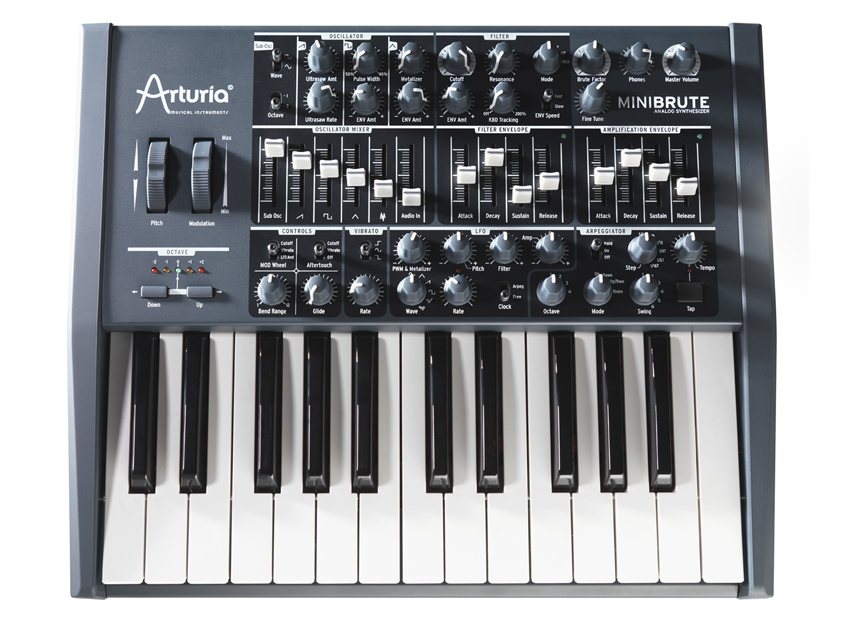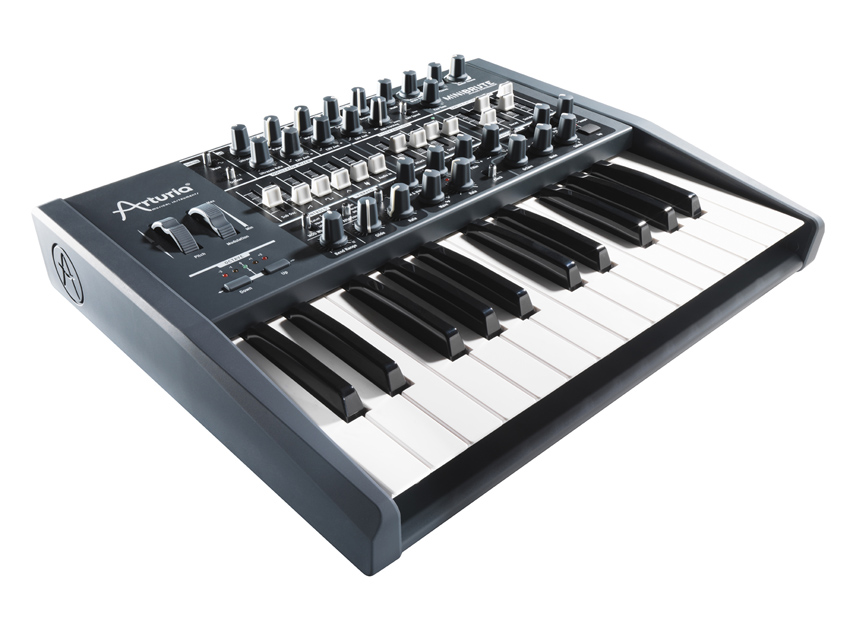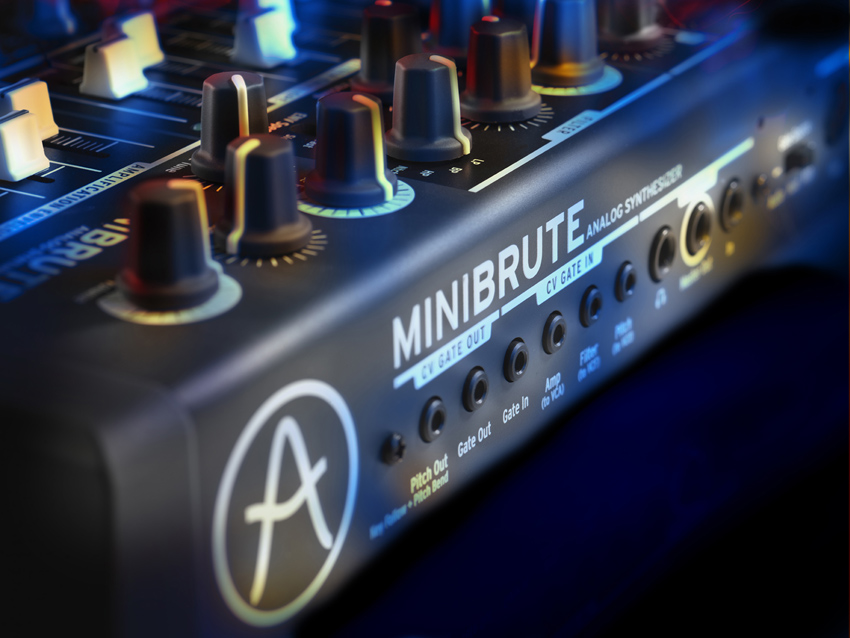NAMM 2012: Arturia Minibrute analogue synth announced

Arturia Minibrute

Arturia Minibrute angle

Arturia Minibrute rear

Arturia Minibrute rear angle

Arturia Minibrute sliders close-up

Arturia Minibrute switches close-up
NAMM 2012: You can't fail to spot the irony in the news that Arturia, a company that made its name replicating vintage analogue synths in software, has just announced the Minibrute - a true analogue hardware synth of its own.
Click here for a gallery of Arturia Minibrute photos
Coming with a two-octave keyboard, this sports a multi-wave oscillator, classic multimode filter and a range of modulation options.
Other feature include the Brute Factor, which is designed to add saturation and rich harmonics; the Ultrasaw, which generates "shimmering" sawtooth waveforms; and the Metalizer, for extreme triangle harmonics.
An arpeggiator has been thrown into the mix too, as has CV, Gate, MIDI and USB MIDI I/O.
The Minibrute will cost you €499, and a full spec list is below. Check out the Arturia website for more.
We're hoping to bring you video of this thuggish synth very soon.
Arturia Minibrute main features
- 100% analog audio signal path
- Steiner-Parker multimode filter
- Voltage Controlled Oscillator
- Oscillator Mixer with sub-osc, sawtooth, square, white noise, triangle, audio in.
- LFO1 with 6 waveforms and bi-polar modulation destinations
- LFO2 with 3 vibrato modes
- Brute Factor™ delivering saturation and rich harmonics
- Ultrasaw generating shimmering sawtooth waveforms
- Metalizer bringing extreme triangle harmonics
- Two ADSR Envelope Generators
- 25-note keyboard with aftertouch
- Pitch-bend with 1 octave range, Modulation wheel
- External analog audio input
- CV In controls: Pitch, Filter, Amp
- CV Out controls: Pitch
- Gate In/Out, MIDI In/Out, USB MIDI In/Out
- 1/4" audio output, 1/4" headphone output
Full function arpeggiator:
- 4 modes of arpeggiation
- 4-octave range control
- 6 time divisions
- Swing control
Stay tuned to MusicRadar.com's dedicated NAMM 2012 hub for more info and other highlights from the show.
Want all the hottest music and gear news, reviews, deals, features and more, direct to your inbox? Sign up here.

I’m the Deputy Editor of MusicRadar, having worked on the site since its launch in 2007. I previously spent eight years working on our sister magazine, Computer Music. I’ve been playing the piano, gigging in bands and failing to finish tracks at home for more than 30 years, 24 of which I’ve also spent writing about music and the ever-changing technology used to make it.